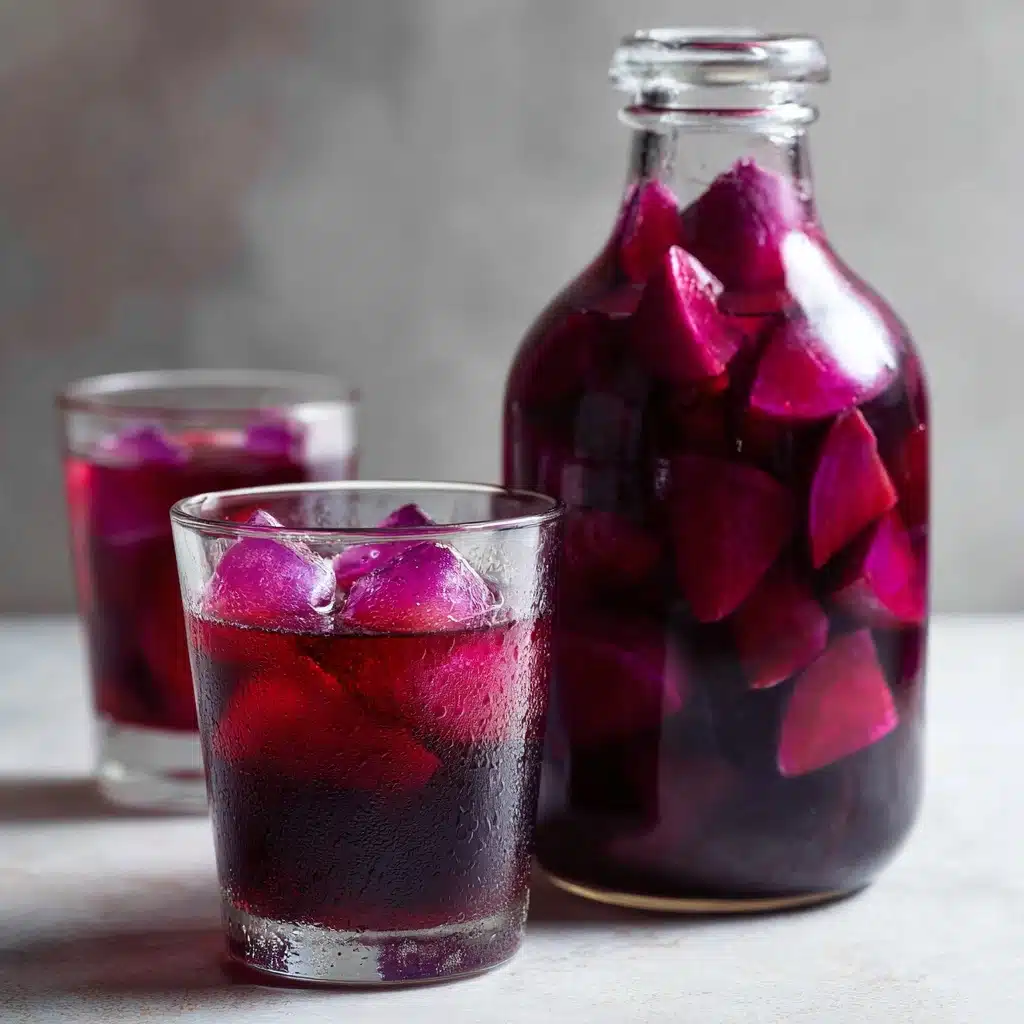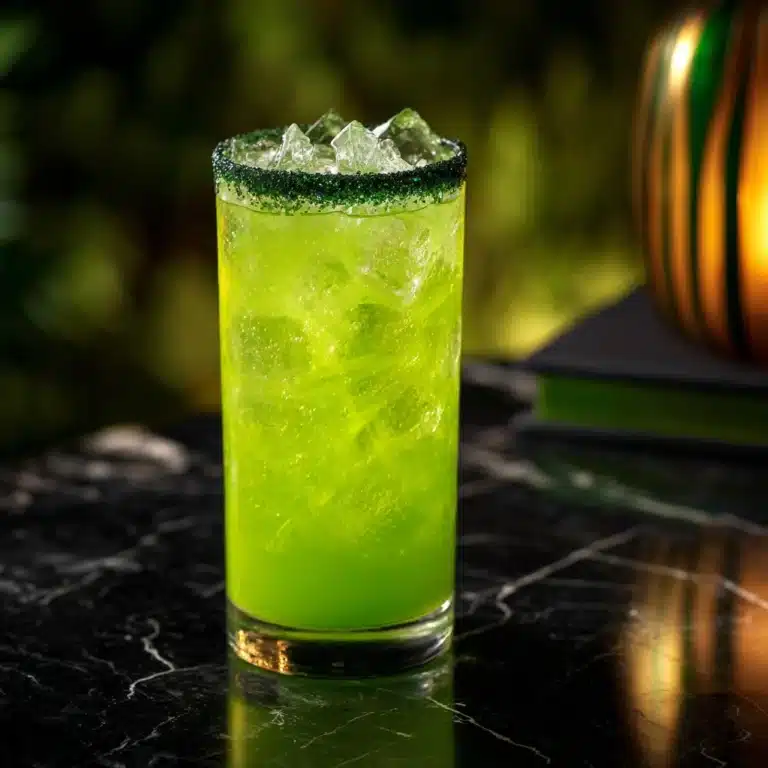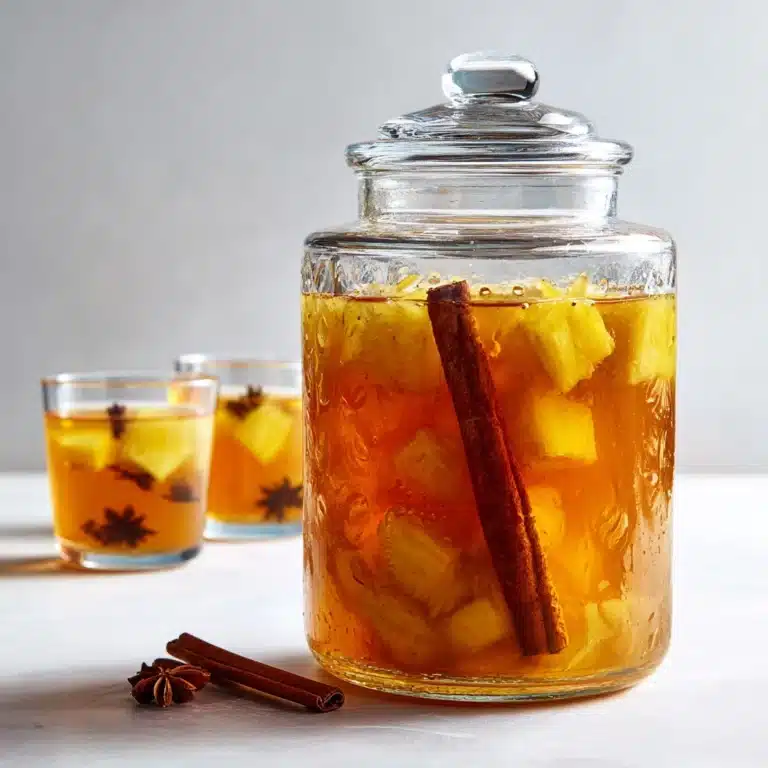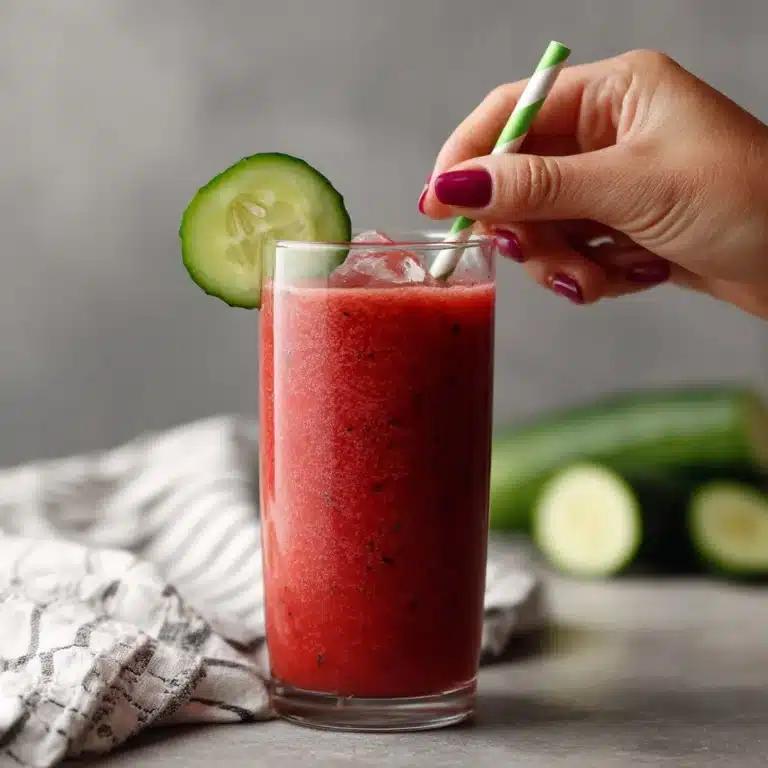Beet Kvass is a sparkling, ruby-red fermented beverage that’s as beautiful as it is good for you. With its tangy, earthy flavor and gentle fizz, this probiotic powerhouse has roots in Eastern European tradition and is beloved for how it livens up your daily routine—whether as a refreshing sip or the secret ingredient in salad dressings and soups. Making Beet Kvass is a kitchen ritual I look forward to: it’s astonishingly easy, endlessly satisfying, and filled to the brim with health benefits.
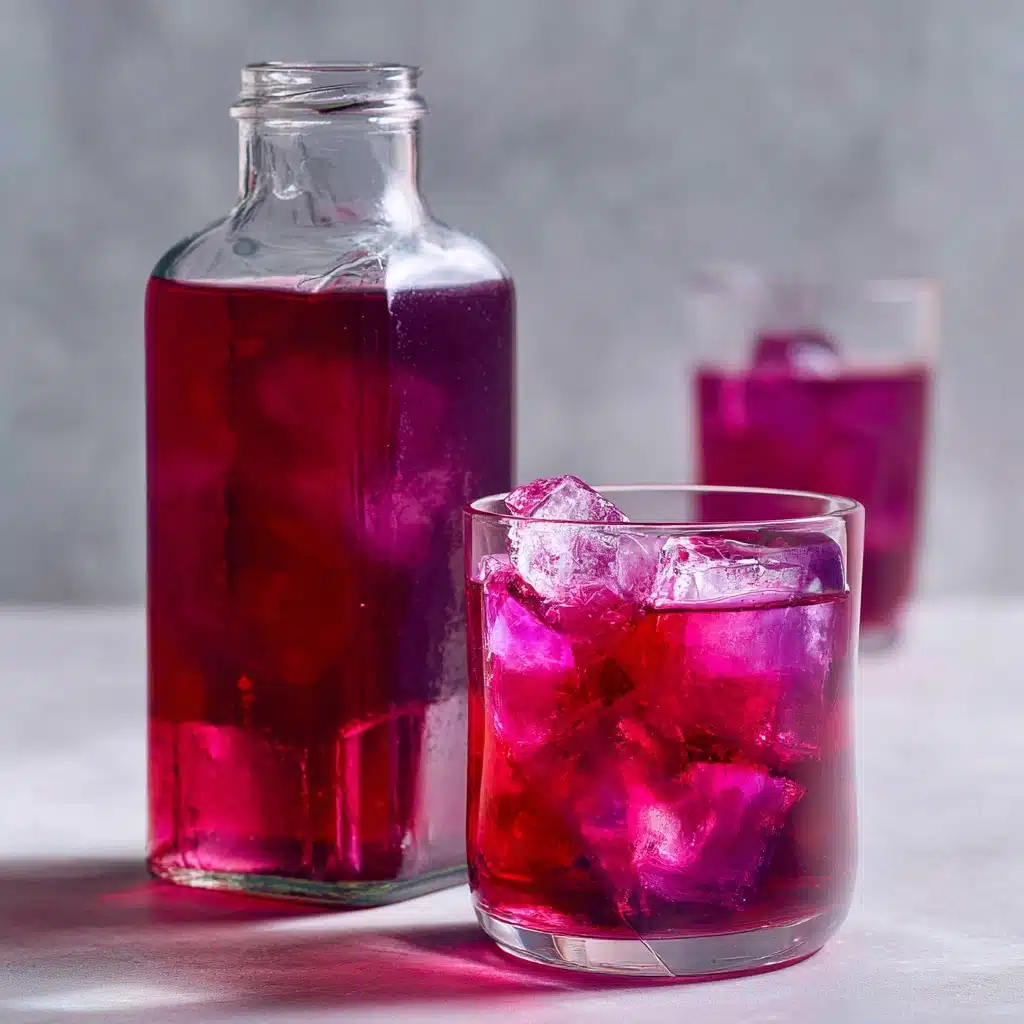
Ingredients You’ll Need
For a drink as striking as Beet Kvass, the ingredient list is almost laughably short. Each plays a crucial part in the experience, from the color and flavor to the fermentation magic. Take a closer look at what makes each component indispensable.
- Beets: Fresh, vibrant beets give this drink its signature color, earthy-sweet flavor, and a dose of vitamins and minerals.
- Sea Salt: Unrefined sea salt encourages healthy fermentation and balances the natural earthiness of the beets.
- Filtered Water: Always use non-chlorinated, filtered water to avoid interfering with the good bacteria needed for fermentation.
- Whey (optional): Adding a little whey speeds up fermentation, but your Beet Kvass will do just fine without it if you prefer a fully plant-based version.
How to Make Beet Kvass
Step 1: Prep Your Beets
Wash, peel, and cube the beets into roughly 1-inch pieces. The key here is consistency—cutting the beetroot into even chunks ensures everything ferments at the same rate, and the deep crimson color starts to work its magic right away.
Step 2: Layer the Jar
Pile your chopped beets into a clean, quart-sized glass jar. Sprinkle in the sea salt and, if you’re using it, the whey. Pour the filtered water over everything, making sure you leave about 1 inch of headspace at the top. This buffer gives the gasses from fermentation room to expand, helping you avoid messy overflows later.
Step 3: Dissolve and Cover
Stir gently until most of the salt dissolves, then cover the jar. You can use a tight lid or, if you like a more traditional approach, cover it with a clean cloth and secure it with a rubber band. This lets the kvass breathe while keeping out curious dust or bugs.
Step 4: Ferment at Room Temperature
Tuck your jar away at room temperature, away from direct sunlight. Let the magic happen for 3 to 5 days, checking after the third day. You’ll notice a subtle fizz and a punchy, tangy aroma—the true signals of Beet Kvass coming to life. If you like it bolder or fizzier, give it an extra day or two.
Step 5: Strain and Store
Once you’re thrilled with the flavor, strain the liquid into a clean bottle or another jar. Pop the finished Beet Kvass in the fridge, and enjoy that first, refreshing glass. Don’t toss those beet pieces: you can repurpose them for a second ferment or chop them into a salad for a pop of flavor.
How to Serve Beet Kvass
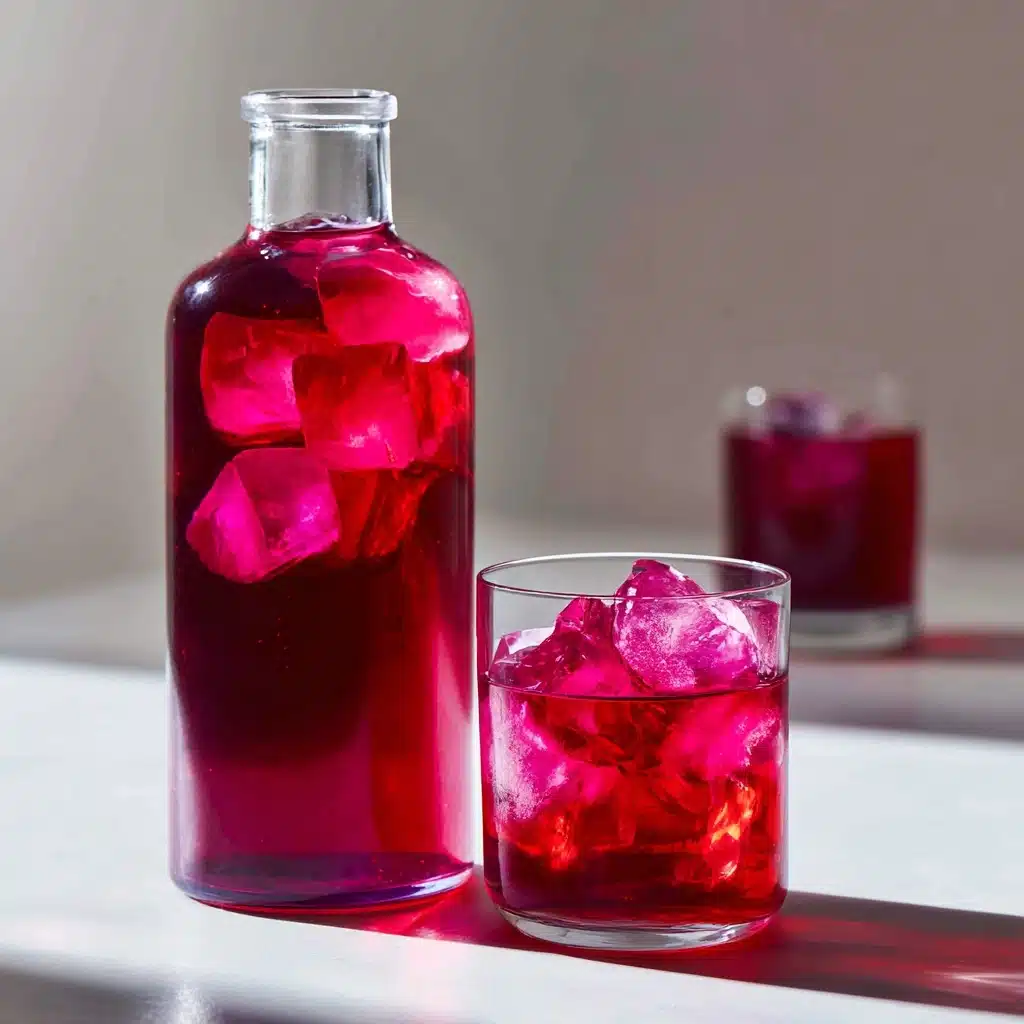
Garnishes
Serve Beet Kvass ice-cold, finished with a fanciful twist. Add a slice of lemon or orange, a spring of fresh dill, or even a shard of pickled beet from the jar. Each little touch lifts the drink and hints at the earthy, tangy layers inside your glass.
Side Dishes
Traditionally, Beet Kvass pairs beautifully with hearty, rustic fare—think dark rye bread, pickled vegetables, or a scoop of creamy potato salad. It’s just as delightful next to light grain bowls or roasted root veggies, bringing zing to every bite.
Creative Ways to Present
Lean into the vivid color by pouring Beet Kvass into petite glass bottles for an elegant dinner party starter, or mix it into dressings and cold borscht for a flavor and color boost. You can even serve it in shot glasses for a uniquely healthful amuse-bouche!
Make Ahead and Storage
Storing Leftovers
Beet Kvass keeps splendidly in the refrigerator for up to two weeks. Use a tightly sealed glass bottle or jar to keep out unwanted flavors and keep that fizz lively. Give it a gentle swirl before pouring if you notice any separation.
Freezing
While most folks enjoy their Beet Kvass fresh, you can freeze it in ice cube trays for convenient splashes into smoothies or soups. Just remember, the texture and carbonation will change a bit once it’s thawed, but the earthy flavor stays intact.
Reheating
Beet Kvass is best enjoyed chilled, but if you want to add it to a warm dish, stir it in right before serving to preserve as many of the probiotics as possible. Avoid boiling or prolonged heating, since high temperatures can diminish its beneficial qualities.
FAQs
Is Beet Kvass supposed to be fizzy?
Yes, a slight fizz means your Beet Kvass has fermented well! The gentle bubbles are a sign of healthy, active fermentation and add a delightful sparkle to every sip.
Can I leave out the whey for a vegan version?
Absolutely! The whey is totally optional—its main job is to hurry along the ferment. If you skip it, the kvass may just take an extra day or two, but the result is fully vegan and just as delicious.
My Beet Kvass tastes salty—did I do something wrong?
A touch of saltiness is normal, especially right after straining. As Beet Kvass chills and ages, the saltiness becomes milder and the flavors round out. Next time, feel free to experiment with slightly less salt if you prefer.
Can I use other vegetables or flavorings?
Definitely! Try adding ginger, garlic, or even sliced carrots alongside your beets. Each new addition brings a unique twist, so don’t be afraid to play and make your Beet Kvass truly your own.
Is mold normal on top of my kvass?
A bit of harmless white yeast (called kahm yeast) is common and safe to skim off, but actual mold (fuzzy, blue, green, or black) means you should discard and start again. Keep everything clean and use fresh, quality ingredients for the best results.
Final Thoughts
If you’ve ever wanted a tangy, nourishing habit that’s as easy as it is rewarding, Beet Kvass checks all the boxes. It’s a playful but traditional way to boost your kitchen confidence and support your health, one magenta sip at a time—give it a try, and you’ll wonder how you ever lived without it!
Print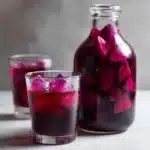
Beet Kvass Recipe
- Total Time: 3–5 days (fermentation time)
- Yield: 4 cups 1x
- Diet: Vegan
Description
Learn how to make homemade Beet Kvass, a traditional Eastern European fermented drink that is rich in probiotics and great for gut health. This tangy and earthy beverage is easy to prepare and can be enjoyed on its own or used as a base for dressings and soups.
Ingredients
Ingredients:
- 2 medium beets, peeled and chopped into 1-inch cubes
- 1 tablespoon sea salt
- 4 cups filtered water
- 1 tablespoon whey (optional, for faster fermentation)
Instructions
- Prepare the Beets: Place the chopped beets in a clean quart-sized glass jar.
- Add Seasonings: Add the salt and whey (if using), then pour in the filtered water, leaving about 1 inch of headspace at the top.
- Stir and Cover: Stir gently to dissolve the salt. Cover the jar with a lid or cloth secured with a rubber band.
- Fermentation: Let it sit at room temperature out of direct sunlight for 3–5 days. Taste after 3 days for readiness.
- Strain and Refrigerate: Strain the liquid into a clean bottle or jar and refrigerate. Discard the beets or use them for a second batch.
Notes
- Use only non-chlorinated water and unrefined salt for best fermentation results.
- Beet kvass can be enjoyed on its own or as a base for salad dressings and soups.
- For a milder flavor, consider adding a clove of garlic or a slice of ginger before fermenting.
- Prep Time: 10 minutes
- Cook Time: 0 minutes
- Category: Beverage
- Method: Fermenting
- Cuisine: Eastern European
Nutrition
- Serving Size: 1/2 cup
- Calories: 15
- Sugar: 2g
- Sodium: 350mg
- Fat: 0g
- Saturated Fat: 0g
- Unsaturated Fat: 0g
- Trans Fat: 0g
- Carbohydrates: 3g
- Fiber: 0g
- Protein: 0g
- Cholesterol: 0mg
